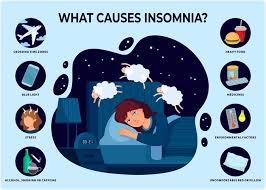Insomnia Light Therapy: A Natural Solution for Better Sleep
Insomnia is a common sleep disorder that affects millions of people worldwide. It can lead to daytime fatigue, reduced concentration, and a decreased ability to function effectively. While there are various treatment options available, one natural solution gaining popularity is insomnia light therapy.
What is Insomnia Light Therapy?
Insomnia light therapy, also known as phototherapy, involves exposure to specific wavelengths of light to regulate the body’s internal clock and improve sleep patterns. This therapy aims to simulate natural sunlight and help reset the circadian rhythm, which plays a crucial role in regulating our sleep-wake cycle.
The most common form of insomnia light therapy involves using a light box or lamp that emits bright light. These devices emit a specific spectrum of light that mimics natural sunlight without harmful UV rays. The recommended intensity of the light and duration of exposure may vary depending on individual needs and the severity of insomnia.
How Does Insomnia Light Therapy Work?
The human body has an internal clock called the suprachiasmatic nucleus (SCN), located in the hypothalamus. This clock responds to environmental cues like light and darkness, helping regulate our sleep-wake cycle. When our internal clock gets disrupted due to factors like irregular schedules or insufficient exposure to natural light, it can result in insomnia.
Insomnia light therapy works by exposing individuals to bright artificial light that mimics sunlight. This exposure helps regulate the production of melatonin, a hormone responsible for promoting sleepiness. By receiving adequate bright light during specific times of the day, such as in the morning or early evening, individuals can reset their internal clock and improve their sleep quality.
Benefits of Insomnia Light Therapy
Insomnia light therapy offers several benefits for individuals struggling with sleep disorders:
- Improved Sleep Quality: Regular exposure to bright light can help regulate the sleep-wake cycle, leading to improved sleep quality and reduced insomnia symptoms.
- Natural and Non-Invasive: Insomnia light therapy is a natural approach that does not involve medications or invasive procedures, making it a safe option for many individuals.
- No Side Effects: Unlike some medications used to treat insomnia, light therapy typically has no significant side effects when used as directed.
- Flexibility in Usage: Insomnia light therapy can be easily incorporated into daily routines. It allows individuals to receive the necessary exposure to bright light at convenient times, such as during breakfast or while working at a desk.
Considerations and Precautions
While insomnia light therapy is generally safe and well-tolerated, it’s essential to consider the following precautions:
- Consultation with a Healthcare Professional: Before starting any new treatment, including insomnia light therapy, it’s advisable to consult with a healthcare professional who can evaluate your specific condition and provide personalized guidance.
- Suitable Light Intensity and Duration: The intensity of the light and duration of exposure may vary depending on individual needs. It’s crucial to follow recommended guidelines provided by experts or manufacturers of the light therapy device you choose.
- Avoiding Overexposure: While bright light is beneficial, excessive exposure may disrupt sleep patterns or cause eye strain. It’s important to strike a balance and avoid prolonged exposure to bright light sources.
Conclusion
Insomnia light therapy offers a natural and non-invasive solution for individuals struggling with sleep disorders. By utilizing the power of bright light to regulate the internal clock, this therapy can help improve sleep quality and alleviate insomnia symptoms. If you are considering insomnia light therapy, it is always recommended to consult with a healthcare professional to determine the most suitable approach for your specific needs.
Shedding Light on Sleeplessness: A Guide to Insomnia Light Therapy and Its Impact on Rest
- What is insomnia light therapy?
- How does insomnia light therapy work?
- Is insomnia light therapy effective for treating sleep disorders?
- Are there any side effects of insomnia light therapy?
- How long does it take to see results from insomnia light therapy?
What is insomnia light therapy?
Insomnia light therapy, also known as phototherapy, is a treatment approach that involves exposing individuals to specific wavelengths of light to regulate their internal clock and improve sleep patterns. By simulating natural sunlight, this therapy aims to reset the circadian rhythm, which plays a crucial role in regulating our sleep-wake cycle. It typically involves the use of a light box or lamp that emits bright light, mimicking sunlight without harmful UV rays. Insomnia light therapy helps regulate the production of melatonin, the hormone responsible for promoting sleepiness, thereby improving sleep quality and reducing insomnia symptoms.
How does insomnia light therapy work?
Insomnia light therapy works by utilizing specific wavelengths of light to regulate the body’s internal clock and improve sleep patterns. Our internal clock, known as the suprachiasmatic nucleus (SCN), responds to environmental cues like light and darkness, playing a crucial role in regulating our sleep-wake cycle. When this internal clock gets disrupted due to factors like irregular schedules or insufficient exposure to natural light, it can result in insomnia. Insomnia light therapy involves exposing individuals to bright artificial light that mimics sunlight, helping to regulate the production of melatonin, a hormone responsible for promoting sleepiness. By receiving adequate bright light during specific times of the day, individuals can reset their internal clock and improve their sleep quality.
Is insomnia light therapy effective for treating sleep disorders?
Insomnia light therapy has shown effectiveness in treating sleep disorders, including insomnia. Research studies have demonstrated that exposure to bright light, similar to natural sunlight, can help regulate the body’s internal clock and improve sleep patterns. By resetting the circadian rhythm and promoting the production of melatonin, insomnia light therapy can lead to improved sleep quality and reduced insomnia symptoms. However, it is important to note that the effectiveness of insomnia light therapy may vary among individuals. Consulting with a healthcare professional is recommended to determine if this treatment approach is suitable for your specific sleep disorder and to receive personalized guidance on its usage.
Are there any side effects of insomnia light therapy?
Insomnia light therapy is generally considered safe and well-tolerated, with minimal side effects. However, it’s important to note that individual experiences may vary. Some individuals may initially experience mild side effects such as headaches, eyestrain, or temporary changes in sleep patterns. These side effects are typically short-lived and tend to subside as the body adjusts to the therapy. It’s always advisable to follow recommended guidelines and consult with a healthcare professional before starting any new treatment, including insomnia light therapy, to ensure its suitability for your specific condition and to address any concerns you may have.
How long does it take to see results from insomnia light therapy?
The time it takes to see results from insomnia light therapy can vary depending on the individual and the severity of their insomnia. Some individuals may start experiencing improvements in their sleep patterns within a few days or weeks of starting light therapy, while others may take longer. Consistency and adherence to the recommended guidelines for light intensity and duration are key factors in achieving positive outcomes. It is important to consult with a healthcare professional who can provide personalized guidance and monitor progress throughout the therapy process.


